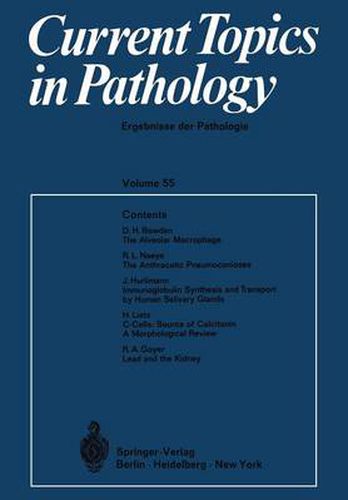Readings Newsletter
Become a Readings Member to make your shopping experience even easier.
Sign in or sign up for free!
You’re not far away from qualifying for FREE standard shipping within Australia
You’ve qualified for FREE standard shipping within Australia
The cart is loading…






This title is printed to order. This book may have been self-published. If so, we cannot guarantee the quality of the content. In the main most books will have gone through the editing process however some may not. We therefore suggest that you be aware of this before ordering this book. If in doubt check either the author or publisher’s details as we are unable to accept any returns unless they are faulty. Please contact us if you have any questions.
Toxoplasmosis is a ubiquitous infection, contracted by at least a third of the population in most areas of the globe. Clinical disease arises rarely, usually unexpectedly, but sometimes with disastrous effects on the patient. Humans, pets, farm and zoo animals may contract toxoplasmosis, possibly involving any clinical laboratory in its diagnosis. Pathologists must ponder the clinical significance of a hyperplastic l. ymph node, a cyst found at autopsy, or a serologic titer. Serving as scientific physicians, pathologists are asked: How is toxoplasmosis diagnosed? ‘What is the treatment for ocular toxoplasmosis, for congenital infection, or for toxoplasmosis in the immunologically compromised host? vVhy does disease develop in as diverse areas as the eye, lymph nodes and placenta? How is Toxoplasma transmitted? This review proposes to survey recent advances, providing a scientific background to diagnose and manage the clinical problems of toxoplasmosis. Reviews are available which emphasize other aspects, such as serologic pro- cedures, resistance and immunity (REMINGTON, 1970), the clinical syndromes (DESMONTS, '1969; FELDMAN, 1968) and comprehensive presentations (JACOBS, 1967; FRENI{EL, '1970). Transmission and Prevalence The recent discovery of the coccidian stages of Toxoplasma in the cat intestine and the Toxoplasma oocyst excreted in cat feces, considerably broadens our understanding of Toxoplasma and its transmission (FRENKEL, DUBEY and MILLER, 1970).
$9.00 standard shipping within Australia
FREE standard shipping within Australia for orders over $100.00
Express & International shipping calculated at checkout
This title is printed to order. This book may have been self-published. If so, we cannot guarantee the quality of the content. In the main most books will have gone through the editing process however some may not. We therefore suggest that you be aware of this before ordering this book. If in doubt check either the author or publisher’s details as we are unable to accept any returns unless they are faulty. Please contact us if you have any questions.
Toxoplasmosis is a ubiquitous infection, contracted by at least a third of the population in most areas of the globe. Clinical disease arises rarely, usually unexpectedly, but sometimes with disastrous effects on the patient. Humans, pets, farm and zoo animals may contract toxoplasmosis, possibly involving any clinical laboratory in its diagnosis. Pathologists must ponder the clinical significance of a hyperplastic l. ymph node, a cyst found at autopsy, or a serologic titer. Serving as scientific physicians, pathologists are asked: How is toxoplasmosis diagnosed? ‘What is the treatment for ocular toxoplasmosis, for congenital infection, or for toxoplasmosis in the immunologically compromised host? vVhy does disease develop in as diverse areas as the eye, lymph nodes and placenta? How is Toxoplasma transmitted? This review proposes to survey recent advances, providing a scientific background to diagnose and manage the clinical problems of toxoplasmosis. Reviews are available which emphasize other aspects, such as serologic pro- cedures, resistance and immunity (REMINGTON, 1970), the clinical syndromes (DESMONTS, '1969; FELDMAN, 1968) and comprehensive presentations (JACOBS, 1967; FRENI{EL, '1970). Transmission and Prevalence The recent discovery of the coccidian stages of Toxoplasma in the cat intestine and the Toxoplasma oocyst excreted in cat feces, considerably broadens our understanding of Toxoplasma and its transmission (FRENKEL, DUBEY and MILLER, 1970).